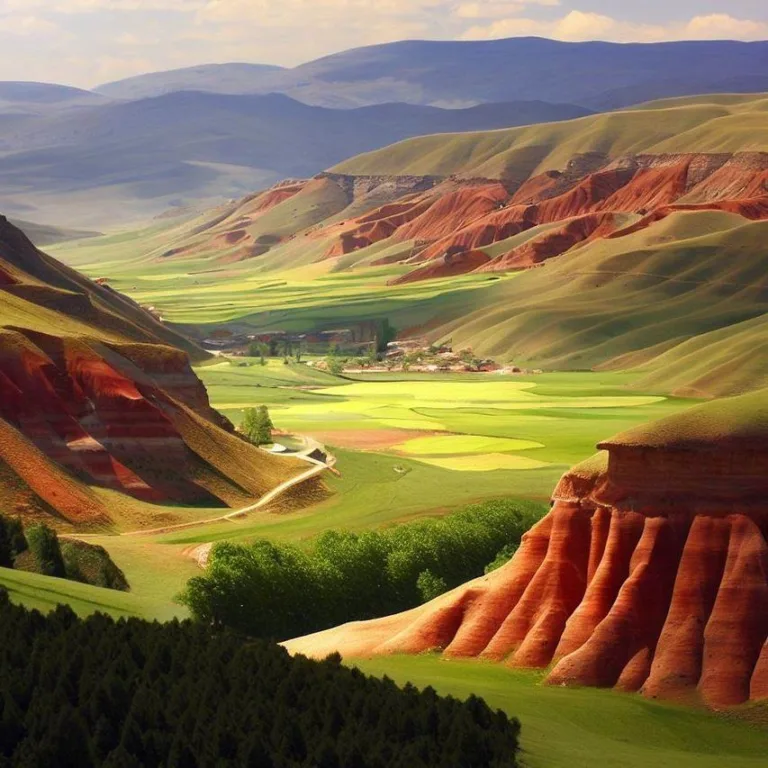Welcome to our comprehensive guide to Anatolie, a region steeped in history, culture, and natural beauty. In this article, we will delve deep into the heart of Anatolie, exploring its diverse heritage, remarkable landmarks, and the unique experiences it has to offer. Join us on this journey through Anatolie!
The enigmatic anatolie region
Anatolie, also known as Anatolia, is a vast and captivating region situated at the crossroads of Europe and Asia. It is a part of modern-day Turkey and is renowned for its rich historical significance. With a history spanning thousands of years, Anatolie has been home to various civilizations, each leaving its indelible mark on the landscape and culture.
Historical marvels
One cannot discuss Anatolie without mentioning its incredible historical sites. Among the most famous is the city of Troy, known for the legendary Trojan War immortalized in Homer’s epic poems. The ruins of Troy offer a glimpse into the past, with ancient walls and artifacts that transport visitors to a bygone era.
Another iconic site in Anatolie is Ephesus, an ancient Greek city known for its well-preserved Roman architecture. The Library of Celsus, the Great Theatre, and the Temple of Artemis are just a few of the awe-inspiring structures that await exploration.
Anatolie’s Unique Blend of Cultures
Anatolie’s history is a tapestry woven with the threads of various civilizations, including the Hittites, Phrygians, Lydians, Persians, Greeks, Romans, Byzantines, and Ottomans. This rich heritage has given rise to a diverse and vibrant culture that continues to thrive in the region today.
One of the most striking aspects of Anatolian culture is its cuisine. The flavors of Anatolie are a delightful fusion of Mediterranean and Middle Eastern influences. Don’t miss the opportunity to savor dishes like kebabs, baklava, and Turkish delight in their place of origin.
Natural beauty abounds
While Anatolie is known for its historical treasures, it also boasts breathtaking natural landscapes. The region is characterized by rolling hills, pristine coastlines, and rugged mountain ranges. Cappadocia, with its otherworldly rock formations and hot air balloon rides, is a must-visit destination for nature enthusiasts.
The Mediterranean and Aegean coasts offer stunning beaches and crystal-clear waters, making them ideal for relaxation and water sports. Whether you’re exploring ancient ruins or basking in the sun, Anatolie has something to offer every traveler.
Frequently Asked Questions
1. What is the best time to visit Anatolie?
Spring (April to June) and autumn (September to November) are considered the best times to visit Anatolie. The weather is pleasant, and tourist crowds are thinner compared to the peak summer months.
2. Are there guided tours available for historical sites?
Yes, guided tours are readily available for most historical sites in Anatolie. Knowledgeable guides can provide valuable insights into the history and significance of each location.
3. Is it safe to travel in Anatolie?
Anatolie is generally a safe destination for travelers. However, it’s always advisable to check the latest travel advisories and exercise standard precautions while exploring the region.
4. What are some lesser-known gems in Anatolie?
Lesser-known gems in Anatolie include the ancient city of Hierapolis, the fairy chimneys of Pasabag in Cappadocia, and the archaeological site of Aphrodisias, known for its well-preserved stadium and temple.
As you plan your journey to Anatolie, keep in mind that this region is a treasure trove of history, culture, and natural wonders. With its diverse offerings and warm hospitality, Anatolie promises an unforgettable experience for all who venture here.
Viz také:






